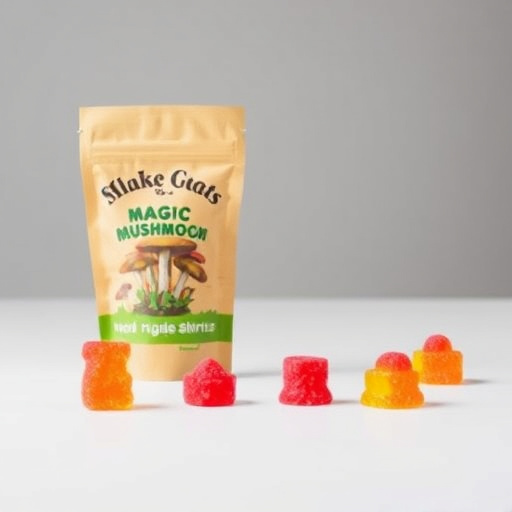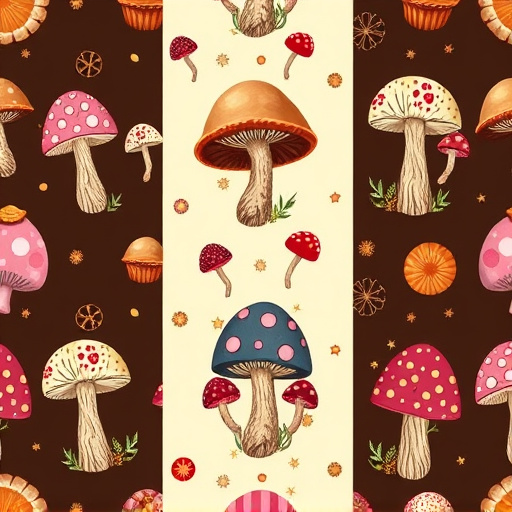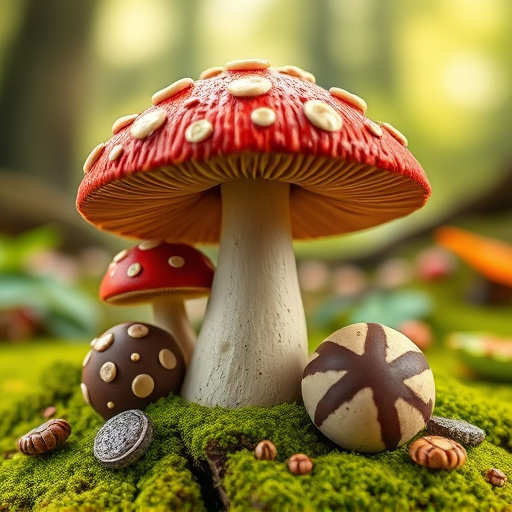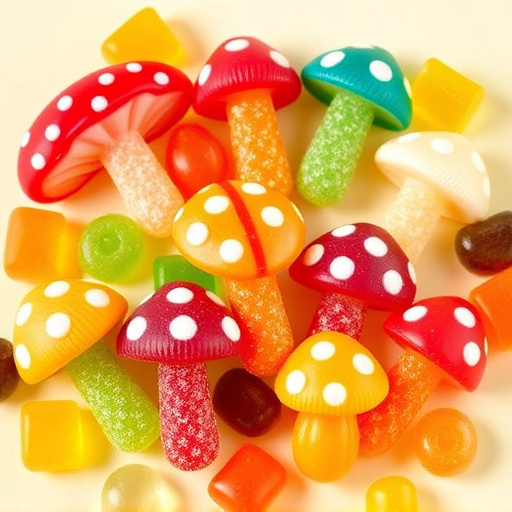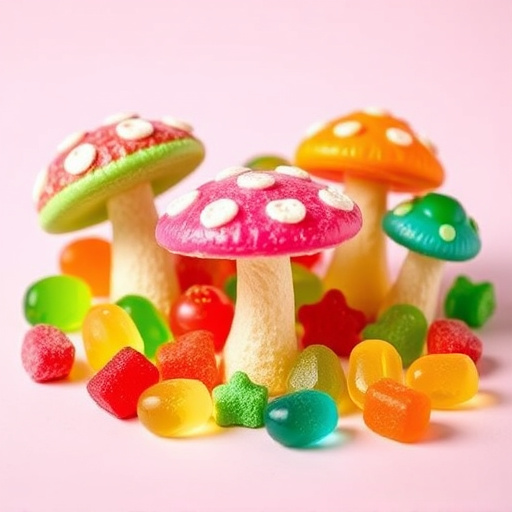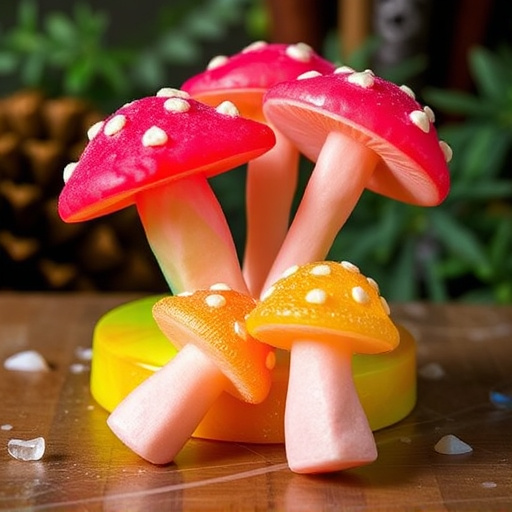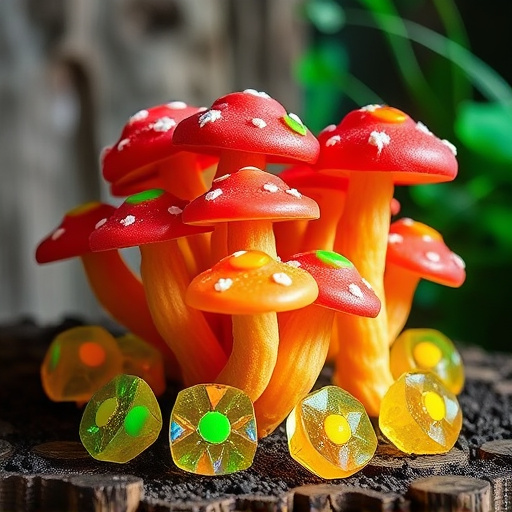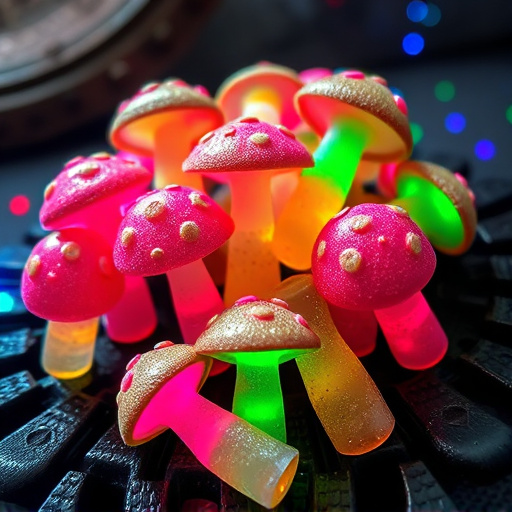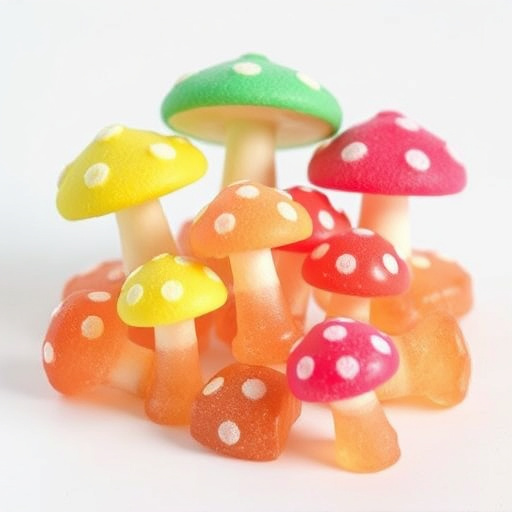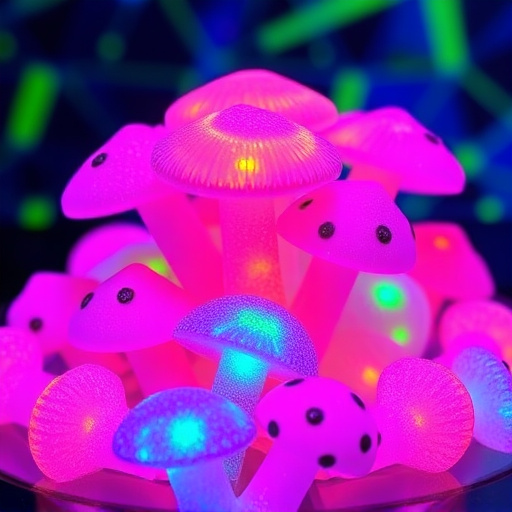The history of magic mushroom gummies spans centuries, blending indigenous cultural practices and 1960s counterculture movements. Indigenous tribes globally recognized psilocybin mushrooms' medicinal properties by the early 1900s, while scientific exploration began mid-century. The '60s psychedelic movement brought magic mushrooms into mainstream awareness, leading to the development of edible forms like gummies. Today, these gummies are widely used recreationally and therapeutically, with research exploring their benefits for treating mental health conditions, such as depression and PTSD, leading to legalizations in certain regions for medical use.
“Uncover the captivating journey of Magic Mushroom Gummies, a modern twist on ancient psychedelic traditions. This comprehensive guide explores the historical perspective, from the sacred rituals of indigenous cultures to the emergence of gummies as a popular contemporary choice. We delve into the scientific understanding of their benefits and risks, offering insights into therapeutic potential and psychological effects.
Additionally, this buying guide navigates the responsible consumption aspect, guiding you through legal considerations, vendor selection, and essential product attributes to ensure a safe and informed experience. Discover the evolution of magic mushroom gummies and learn how to make discerning choices in today’s diverse market.”
- A Historical Perspective on Magic Mushroom Gummies
- – A brief history of psychedelic use
- – Evolution of magic mushroom gummies
A Historical Perspective on Magic Mushroom Gummies
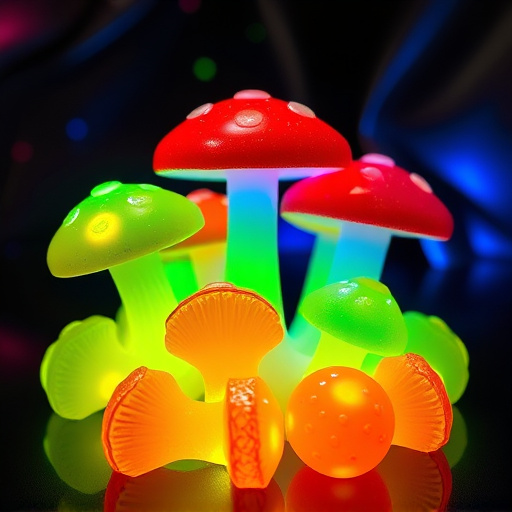
The history of magic mushroom gummies is rooted in centuries-old practices, where various cultures around the world have traditionally used psilocybin mushrooms for their medicinal and spiritual properties. However, it’s only recently that this ancient knowledge has gained mainstream recognition, leading to the development of modern, edible forms like gummies. In the 1960s, interest in psychedelic drugs peaked, bringing psilocybin into the limelight for its potential therapeutic benefits. This era saw early explorations of its effects on mental health and consciousness, which sparked further curiosity.
As research evolved, scientists began to isolate psilocybin, the active compound in magic mushrooms, and explore its pharmaceutical applications. This evolution led to the creation of edible forms like gummies, offering a more palatable and controlled method of administration compared to raw mushrooms. Today, magic mushroom gummies have become a popular choice for both recreational and therapeutic use, reflecting a synthesis of ancient wisdom and modern science.
– A brief history of psychedelic use

The exploration of psychedelic substances, including magic mushrooms, dates back centuries and has deep roots in various cultures worldwide. Traditionally, these fungi have been used for their spiritual and healing properties, often in ritualistic settings. Native American tribes, for instance, utilized psilocybin mushrooms (the active compound in magic mushrooms) for ceremonial purposes, believing them to facilitate communication with the spirit world and promote inner peace.
In more recent times, the 1960s counterculture movement brought psychedelics into the mainstream, with figures like Timothy Leary advocating for their use as tools for personal growth and expanded consciousness. This era saw a surge in interest and experimentation with magic mushrooms, often in the form of ‘gummies’ or edible treats. The history of psychedelic use highlights the enduring fascination with these natural compounds and their potential to offer transformative experiences, which continues to drive modern discussions around their therapeutic applications.
– Evolution of magic mushroom gummies
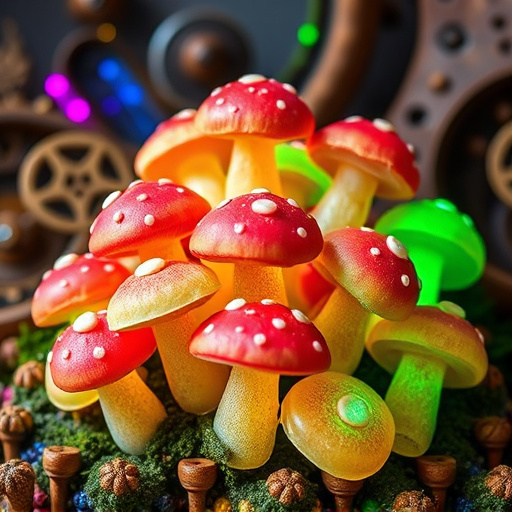
The history of Magic Mushroom Gummies is intertwined with the evolution of psychedelic research and cultural shifts over the past few decades. In the early 1900s, fungi containing psilocybin, the active compound in magic mushrooms, were first documented for their medicinal properties by indigenous cultures worldwide. However, it wasn’t until the mid-20th century that Western science began to explore these compounds seriously. The 1960s counterculture movement brought psychedelics, including magic mushrooms, into mainstream consciousness, sparking a wave of interest in their therapeutic potential.
This period also saw the birth of edible forms, like gummies, as a way to consume psilocybin more palatably and controllably compared to raw mushrooms. As research advanced, the focus shifted from recreational use to exploring the therapeutic applications of psilocybin in treating mental health conditions. This evolution led to a resurgence in interest in psychedelic-assisted therapy, with modern studies validating their potential for depression, anxiety, PTSD, and end-of-life distress. Consequently, the legal status of magic mushrooms (and by extension, gummies) has been gradually changing, with some regions legalizing them for medical or therapeutic use.
The evolution of Magic Mushroom Gummies reflects a broader cultural shift towards exploring psychedelic therapy and recreation. With a rich historical perspective spanning centuries, this modern iteration offers a safe and controlled way to experience the effects once associated with mysterious rituals. Understanding the history of magic mushroom use empowers consumers to navigate the current market responsibly, ensuring access to high-quality products that cater to curious minds seeking both therapeutic potential and recreational enjoyment.

